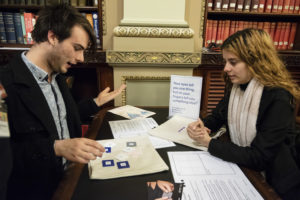Dr Matthew Butler
Senior Lecturer, Faculty of Information Technology, Monash University
Field of expertise: Accessible Information for those who are Blind or have Low Vision
In the time you have been working in your field, what impossible things have become possible?
Assistive technologies are those that help people perform tasks and support their independence, especially for people with a disability. The research and development of assistive technologies used to be a very expensive exercise. Combined with the relatively low number of users, costs were unfortunately often transferred to the end users. In the past decade, however, the emergence of “maker” technologies has changed the landscape of assistive technology. Maker technologies include 3D printers and low cost electronics, and are often accompanied by a strong open community who is willing to help and support each other. Now, bespoke technologies can be developed relatively cheaply and in close partnership with end users, to ensure their specific needs are met. Though widespread adoption of the results are mostly still forthcoming, we enter an exciting new time where the specific technology needs of individuals can be met.
What impossible thing(s) are you working towards making possible, and why?
I want to make ALL information available for people who are blind or have low vision. Those of us who retain our visual sense take for granted the amount of information we constantly take through our sense of sight. This might be information essential for day to day living, such as for education or getting around, but could also be that which we enjoy for pleasure, such as arts and culture. While there are well supported and proven ways for those who are blind or have low vision to get access to a great deal of visual information through tactile or auditory means, it often requires support and time to obtain these alternate representations. What if we had technologies and processes embedded in the creation of visual material that could facilitate access by all?
What is an example of an impossible thing others in your field are currently working to make possible?
Researchers in the field of independent accessible information are looking to address this challenge in many different ways. Some focus on the importance of touch. For example, what role might 3D printing play in the presentation of accessible materials for education and mobility? How might it allow those who are blind or have low vision to experience arts and culture, such as museum and gallery exhibits? And what if these 3D models could be interacted with, or a conversation had with them? Others are exploring the role that sound can play in conveying statistical information. For example, what if a sonification of complex climate change data could present it in a musical way that enabled the listener not only to understand multiple sets of data at once, but also in an emotional way through creative choice of instrumentation? Not only is access to this information important, but the ability for the user to interact with agency and explore ideas of their own interest is vital.
In your field are there any things that you predict will remain impossible, and why?
The ability for those who are blind or have low vision to experience the world just like those with full vision do is very likely to remain impossible. But is that what we should be striving to “solve”? ALL people perceive the world in ways that are unique to them, and those with a restricted visual sense are obviously no exception. Excitingly, they are often able to experience the world in different ways via touch and sound. Therefore, rather than seek to replicate the experiences of those with sight, we should look to ensure that we augment the world with ways to explore it with these other senses.
Image: participants testing Dr Butler’s prototypes at the
‘Extrasensory’ event at Parliament House Melbourne
In your opinion what formerly impossible and now possible thing in your field has made or is making the largest contribution to human or planetary flourishing?
Independent access to graphical information by all is vital. It not only educates and informs us, but it also enriches our lives, such as through arts and culture. We may have previously thought it was impossible to provide this access, however technology is fast breaking down these barriers. The goal of providing blind and low vision people with equal access to the graphical information around us will address not only issues of equity, but also facilitate a greater engagement with the world around them.
More information:
The Australian and New Zealand Accessible Graphics Group
Accessible Graphics Resource Site

